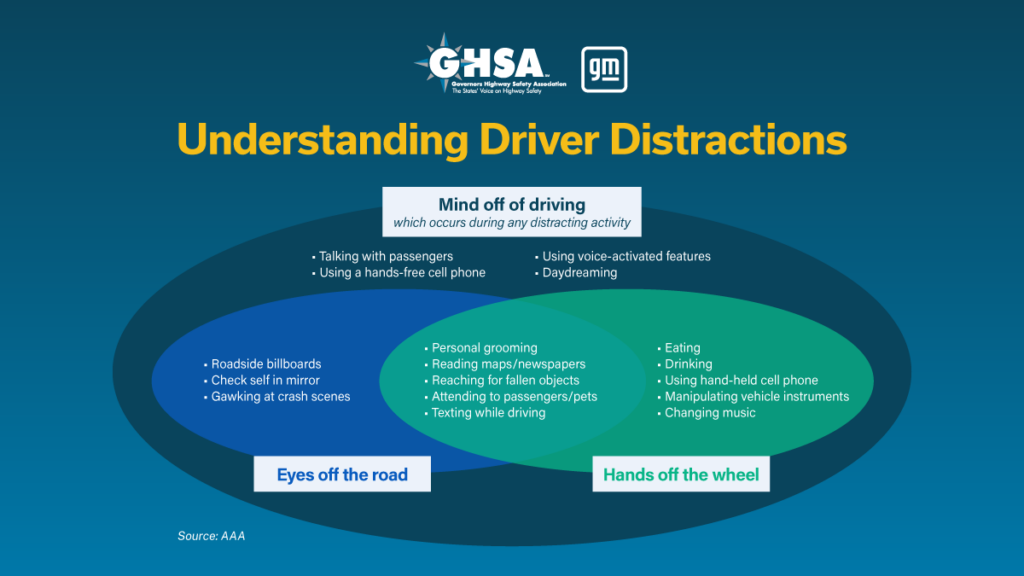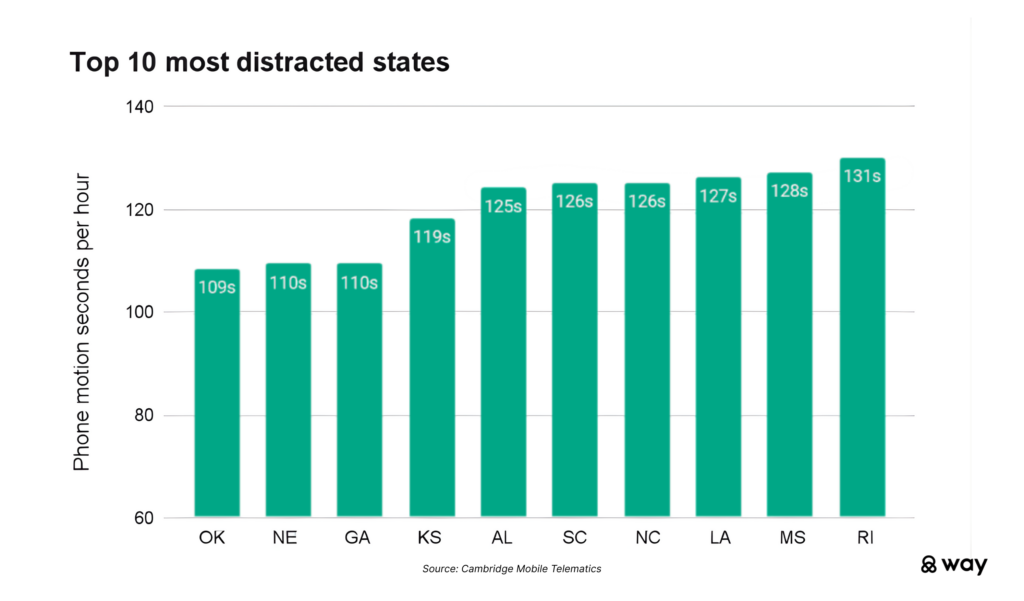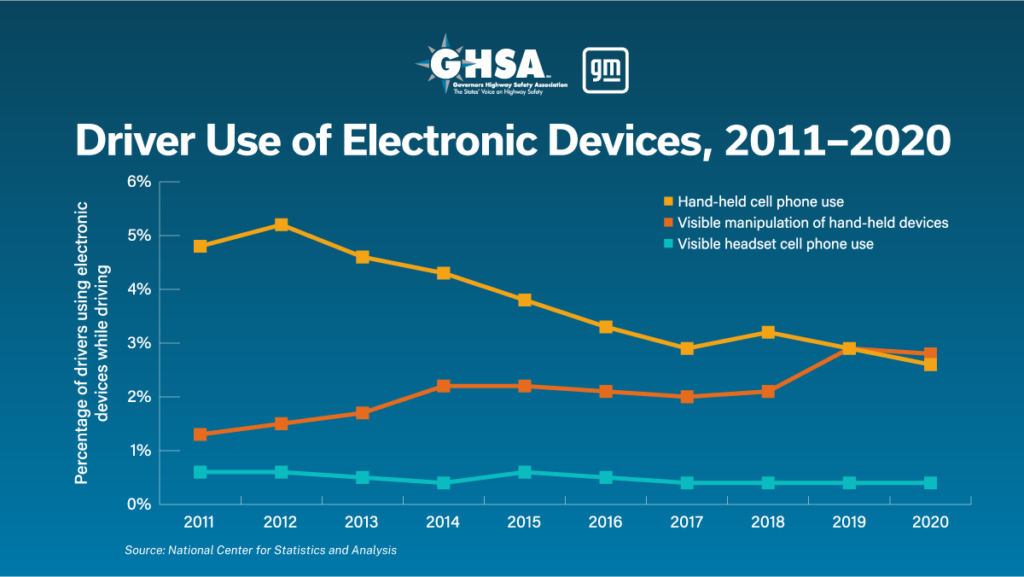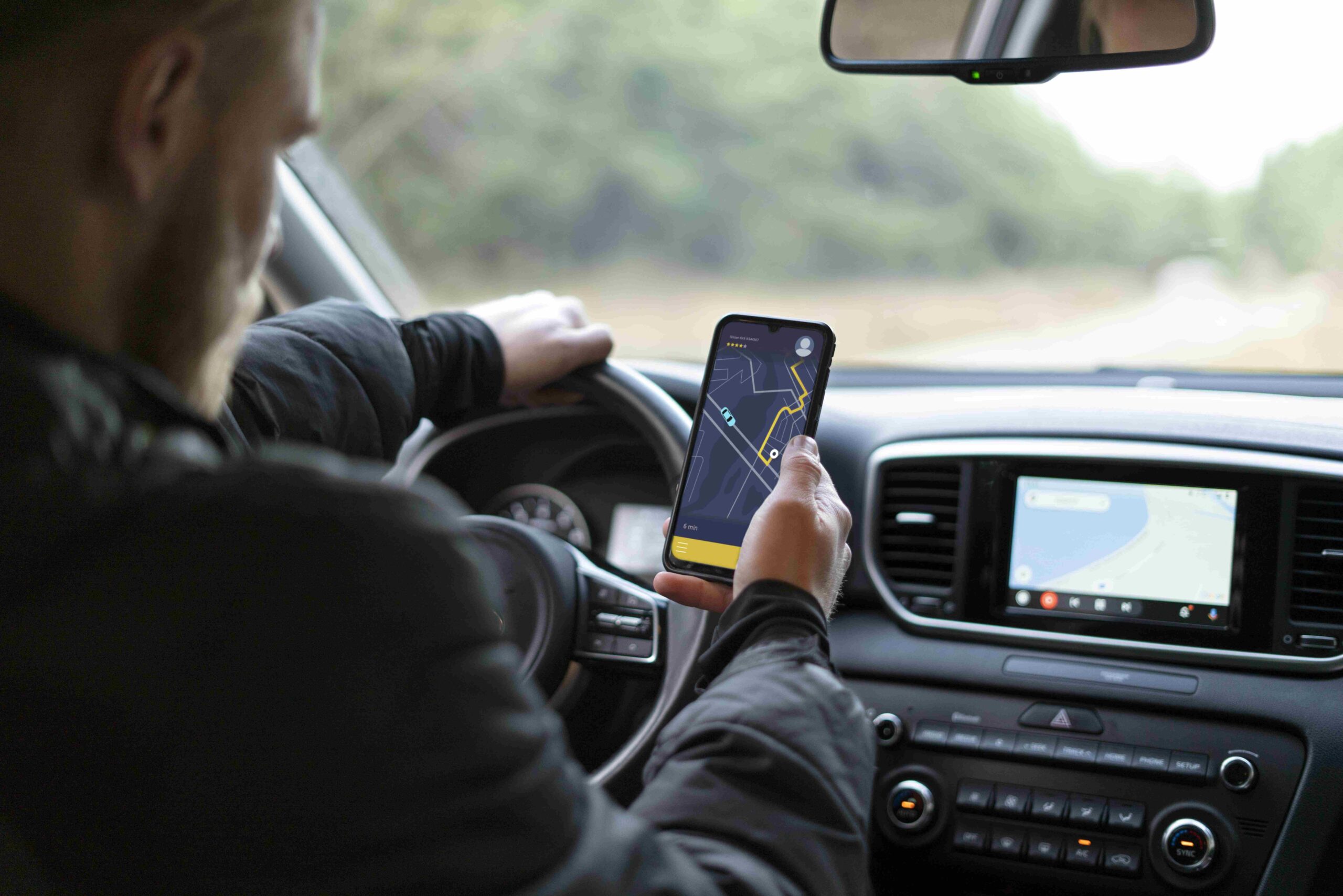Who’s actually paying attention on the road? Red states or blue? Glowing phone’s on the driver’s seat is a common sight these days. No, it is not supposed to be. Replies to texts and the videos that went viral can absolutely wait. Distracted driving statistics show that it has grown into a national safety concern.
We’ve looked at the national data on distracted driving and analyzed how they stack up. Which are the states that are focused while driving, and which are the ones that scroll past each drive, increasing the road fatalities in the country? The findings say how we drive and how often we lose focus while driving.
How Much Do We Know About the Growing Problem of Distracted Driving?
The National Highway Traffic Safety Administration (NHTSA)[1] has defined distracted driving as involving any action that takes a motorist’s eyes and mind off the road. These actions include eating, drinking, talking, and texting on handheld devices.
In 2023, NHTSA [2] recorded 3,275 deaths and approximately 324,819 injuries from distraction-involved crashes. Similarly, the observed handheld talking remained at 2.1% of drivers while driving, which translates to 326,000 according to GHSA.
Distracted driving is not a passing trend; it is an ongoing problem, and the percentage of deaths due to distracted driving crashes has remained the same since 2018. Distracted driving accounts for 8% of all traffic fatalities [3] even in 2025.

Red vs. Blue: What Do the Distraction Patterns Look Like?
While states are often categorized along political lines, the patterns of distracted driving do not align with this classification. The Way team analyzed telematics insights and found that distracted driving behaviors do not conform to these political divisions.
While both red and blue states appear on the list of most distracted drivers, the majority of the first ten are primarily red. However, Rhode Island, a democratic-leaning state, is the most distracted state of the ten.

Therefore, we note that factors beyond politics affect driving habits, including the infrastructure, local laws, and drivers’ tech dependency. So, safer roads result from attention, not affiliation.
Regardless of political affiliation, here are a couple of reasons why some states may not be as great as others.
Effective legislation
The Colorado hands-free law and its results are a great example of how well laws can reduce fatalities in driving. A state without a complete ban on phone usage while driving has a higher number of incidents related to distracted driving.
According to GHSA [5], 31 states now prohibit handheld use, and 49 states prohibit texting. The reduction in distracted driving post-law is documented in Ohio, Alabama, Michigan, and Missouri. In Colorado, one month after its hands-free law, CMT [6] observed a 3.3% drop in phone-motion distraction and estimated 88 crashes prevented.
In Montana, there is no ban on texting while driving or the use of handheld devices while driving.
Use of technology
The states that adapt to technology and devices tend to be involved in more crashes. For instance, CMT telemetry [7] shows distraction differences align with hands-free policy and the rural-urban mix. Approximately 9.5% higher in states without hands-free laws and around 11% higher in rural states.
Practice of law and public awareness
In addition to effective implementation, public awareness is important in ensuring fewer crashes due to distracted driving.
Do the Existing Driving Laws Shape Driving Habits?
Since distracted driving is a prevalent cause of road accidents, many states have passed laws that are supposed to curb distracted driving. The increase in fatalities due to distracted driving rose to 3,275 in 2023, according to NHTSA. Some states have enacted laws that prohibit holding, scrolling, or texting.
The Governors Highway Safety Association (GHSA) has recently recommended complete bans on all drivers’ use of handheld cellphones. However, no state has completely banned cellphone usage by drivers.
Hands-free law implemented in 2025 in Colorado led to a significant drop (around 7%) in phone-driven distractions and prevented dozens of crashes and injuries within the first six months. This demonstrated a clear link between law, compliance, and improved safety.
Based on evidence and according to experts, we can say that driving laws don’t just penalize; they redefine driving behaviors.
What Are the Reasons for Distracted Driving?
There are many reasons for this kind of driving, from complex infotainment systems in cars to even daydreaming. However, the most obvious one is cell phone usage. Here are some of the common reasons that result in distracted driving.
- Sophisticated infotainment systems in cars, like touchscreens, demand more attention while driving.
- While GPS might ease navigation, it splits the driver’s attention. Similarly, voice commands can also lead to cognitive overload and split attention.
- There is also a prevalent optimism bias among drivers, where they think they can multitask, but the evidence of the resulting crashes and fatalities proves otherwise.

How Is Car Insurance Affected by Distracted Driving?
Car insurance rates are calculated based on your place of residence, the type of car you drive, and your driving history. Distracted driving is one of the main reasons for increased car insurance rates, not just for the drivers but for car insurance owners in general.
According to Forbes [8], the increase in car insurance surcharges can be 6%-8% for the total market due to the increase in distracted driving incidents. In other words, safe drivers can help subsidize the risk.
What Should We Learn and Do to Tackle It?
We not only land ourselves in trouble but others too when it comes to distracted driving. It can be in terms of fatalities and car insurance rates. There must be a conscious effort from the driver to avoid such driving instances. This includes keeping your phone in the glove box, using apps that silence notifications while driving, or making use of the safety features of the car that’ll allow you to use the phone hands-free.
Citations
- NHTSA. (n.d.). Distracted Driving. https://www.nhtsa.gov/risky-driving/distracted-driving
- National Highway Traffic Safety Administration. (n.d.). CATSPubWeb. https://crashstats.nhtsa.dot.gov/#!/
- Mattiacci, J. (2025, June 16). Which states have the most distracted driving accidents in 2025? Mattiacci Law, LLC. https://jminjurylawyer.com/car-accidents/which-states-have-most-distracted-driving-accidents-in-2025/
- Sarno, N. (2024, November 6). Which states are the most distracted? Cambridge Mobile Telematics. https://www.cmtelematics.com/news/which-states-are-the-most-distracted/
- Distracted driving. (n.d.). Governors Highway Safety Association. https://www.ghsa.org/state-laws-issues/distracted-driving
- Pascuccio, L. (2025, February 26). Colorado’s Hands-Free Law Reduces Distracted Driving CMT data reveal a 3.3% decrease in phone motion distraction in first month after law. Cambridge Mobile Telematics. https://www.cmtelematics.com/news/colorados-hands-free-law-reduces-distracted-driving/
- Sarno, N. (2024b, December 9). Are rural states more distracted? Cambridge Mobile Telematics. https://www.cmtelematics.com/news/are-rural-states-more-distracted/
- Leicht, A. (2025, January 3). Texting and Driving Statistics 2025. Forbes Advisor. https://www.forbes.com/advisor/car-insurance/texting-driving-statistics/

Sara Sam may not look like your typical car and finance expert, but don’t let that fool you. With over four years of experience in the industry, she knows all the ins and outs of cars, car insurance, and refinancing. You can trust Sara to help you navigate the often-confusing world of automobiles and financing.


















